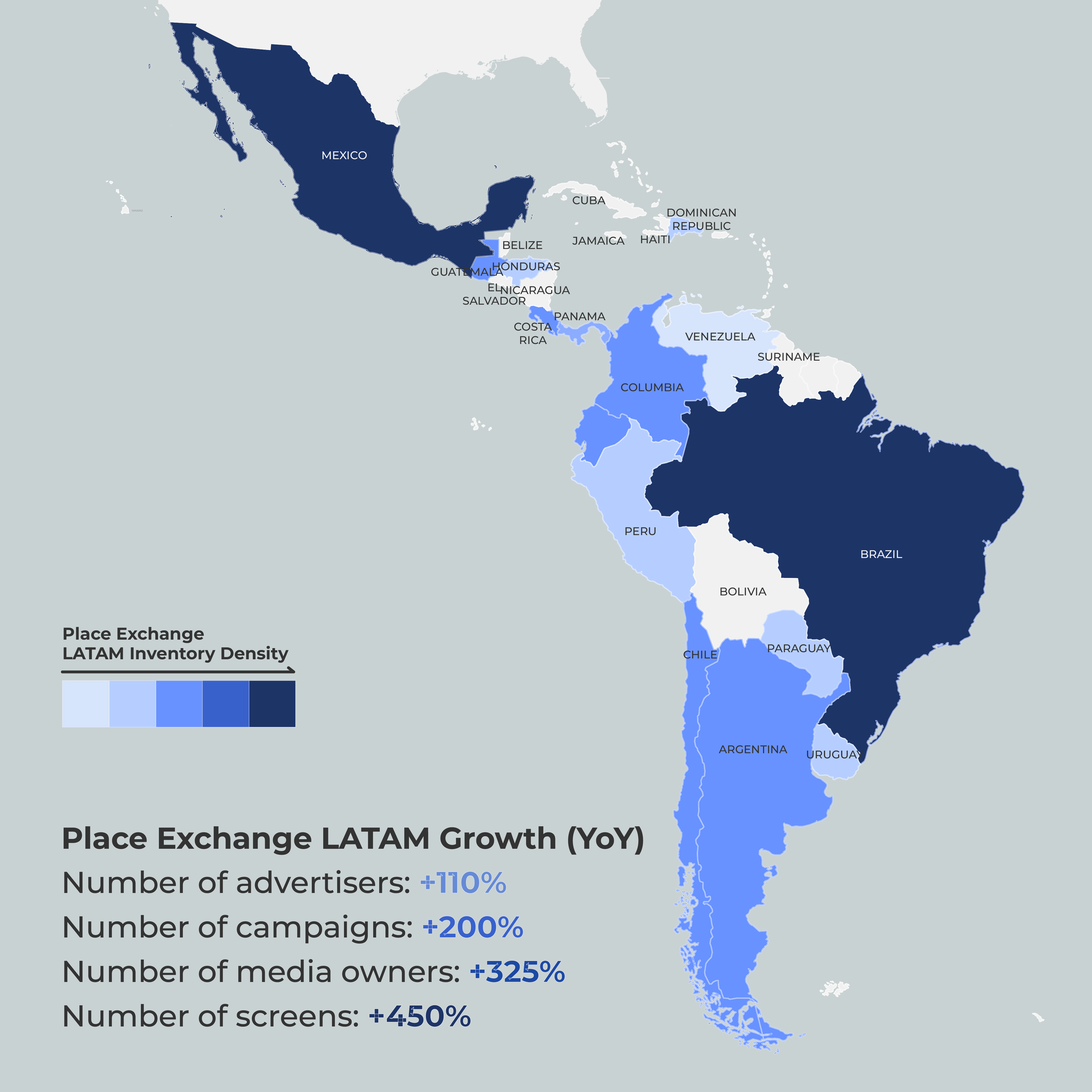Media Owners: Control Your DOOH Destiny With Transparency
December 18, 2023 By Thomas Roberts

Latin America’s (LATAM) programmatic Digital Out of Home (pDOOH) advertising industry is booming, with an expected CAGR of 8.31% through 2027, according to Mordor Intelligence. At the DPAA Latin America conference in Miami earlier this year, large global players like Amazon Prime and GroupM, stated that they are bullish on pDOOH growth in LATAM. As major global brands increase investments in LATAM, advertising spend continues to skyrocket and successful media owners are capitalizing with data-enriched omnichannel capabilities.
For media owners to succeed amidst the rise of programmatic trading, they must proactively take ownership over their media and pricing, vet partners carefully, exert control across all sales channels, and make the right strategic technology choices. As a pure-play SSP focused solely on publisher interests, Place Exchange believes that media owners can and should steer this revolution. How? By taking four key areas into consideration:
Maintain Full Control
Media owners should always be in total control of pricing, metadata, audience data, and media buys. While SSPs have great insight into market dynamics to provide data points to help inform and steer pricing decisions, they should not dictate it. Media owners should let unique inventory attributes and programmatic demand signals, not external algorithms, influence rates. Likewise, media owners should always retain full control over their inventory metadata, branding, and impression audience data (3rd-party measured) to ensure consistency in the ecosystem. Any demand partner dictating impression multipliers should be called into question. Media owners should also control the brands buying them, and should maintain the right to accept or deny any ad based on restrictions, existing relationships, or other business reasons.
Demand Transparency
Media owners should insist on full visibility into every programmatic transaction on their screens, as well as auctions and selling models. Clarity should be provided into CPMs being transacted and any fees taken out via the supply chain. Additionally, publishers should dictate the selling model with CPM-based auctions (the international standard), and not Cost Per Play or any other manipulated auction type which functions as tactical arbitrage, squeezing non-transparent margins from the supply chain. Media owners should be wary of resellers or middle men looking to squeeze margin from media owners while confusing the buyers. Finally, media owners should always have a direct line of communication with the brands, agencies, and DSPs buying their media to maintain control over their sales channel.
Engage Multiple SSP Partners
SSP partners are critical to driving effective scaling for pDOOH as they each help connect screens with valuable and different demand sources. Not all SSP partners are created equal, however, and pDOOH media owners should pose questions to prospective SSPs to understand factors like the depth of demand connections, quality of integrations, and ultimate incentives.
Matias Zardain, Director of Business Development at Doohmain, a leading global CMS, says “Choosing independent and fully integrable tech partners, that empower transparency and embrace multiple SSP integrations, will bring media owners the most success.”
This requires media owners to ensure that any SSP partner will prioritize their interests and inventory yield and be wary of platforms that have inherent conflicts of interest by also owning and operating competitive DSPs and secondary auctions. Many DOOH platforms now promise “mediation” to optimize yield, yet charge extra fees for that basic functionality. Maximizing programmatic revenue should not require paying more. The ideal partner is one committed to transparency, publisher enablement, and platform flexibility regardless of programmatic trends. Lastly, be skeptical of any SSP attempting to establish exclusivity arrangements, as these rarely benefit media owners in the long run. Unless they are willing to guarantee strict revenue commitments in any exclusive supply contract, media owners should not agree to any exclusivity as it ultimately limits their global demand sources. Media owners should integrate with partners enhancing their existing systems vs. overhauling operations.
Let Your Needs Drive Tech Decisions
As programmatic continues to help scale DOOH globally, the best practice is to allow your core business requirements and existing workflows to determine technology decisions.
Focus first on deploying software tools for your own business fundamentals like direct sales, inventory and screen content management, and overall revenue optimization. Programmatic partners should be evaluated on how seamlessly they can integrate with your existing technology landscape.
Henrique Abreu, Head of Programmatic at Eletromidia, Brazil’s largest pDOOH publisher with over 45,000 screens, says “Navigating such a vast network and capitalizing on the booming programmatic trend requires strong collaboration. By partnering with only the best in the industry, [media owners] can consistently deliver exceptional results for its advertisers. And transparency, control, and technology are the core features to build a solid pDOOH network.”
The programmatic revolution brings enormous opportunity to media owners, but it is essential to maintain control over their inventory, pricing power, and revenue streams. By taking a proactive stance on partnerships, transparency, pricing, and technology, DOOH media owners can steer their own programmatic future. DOOH publishers should ride this rising tide on their own terms.